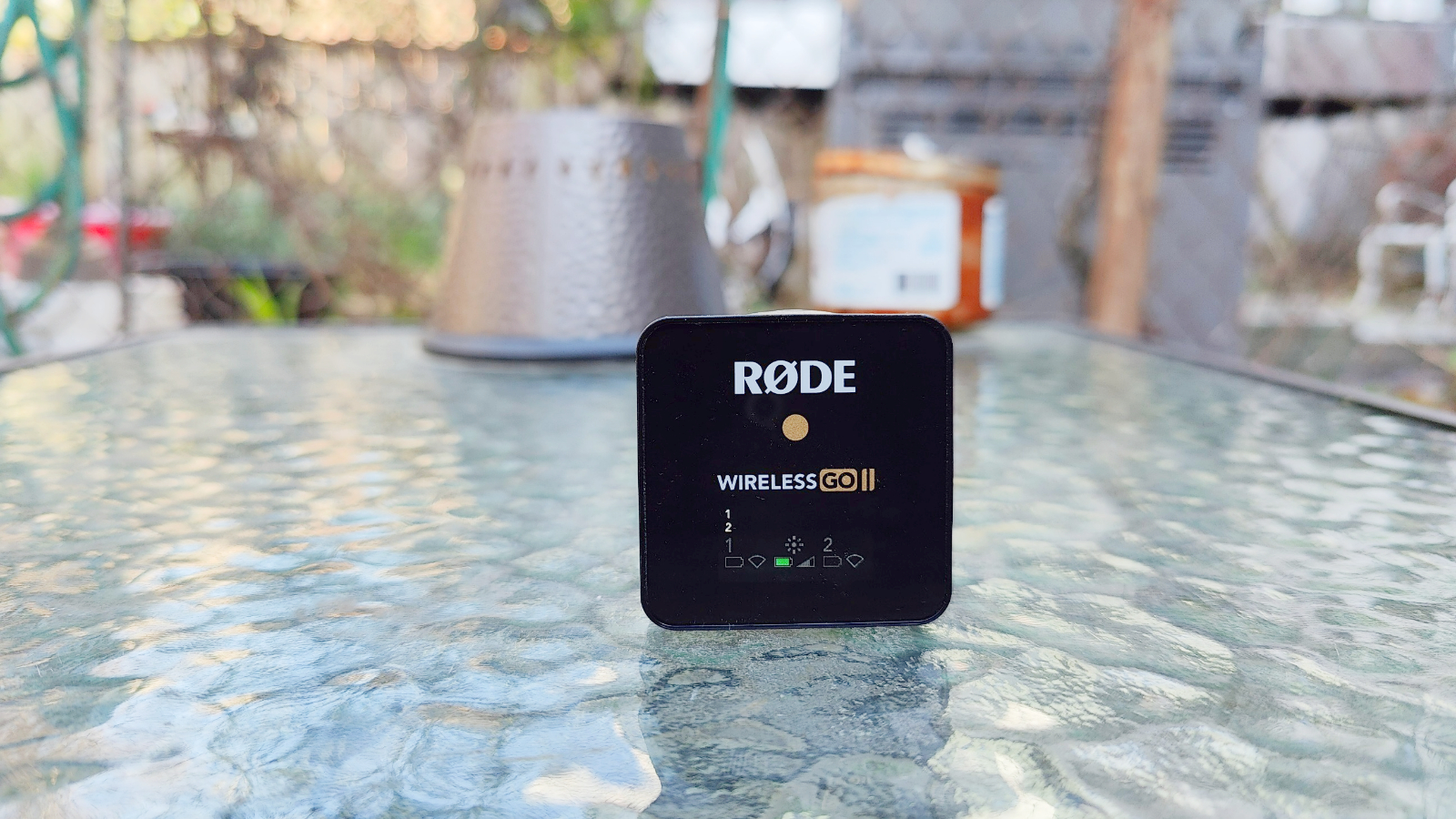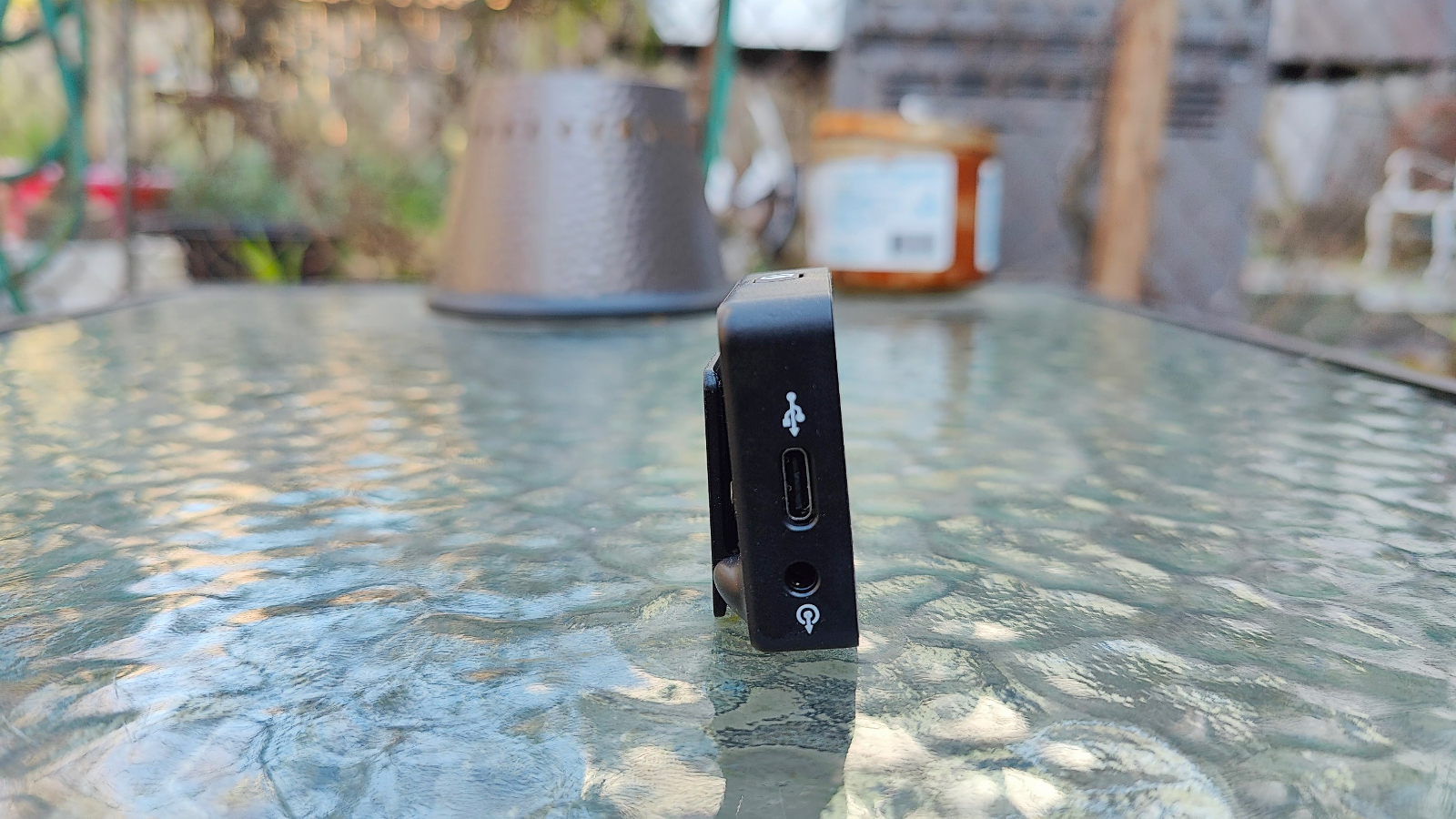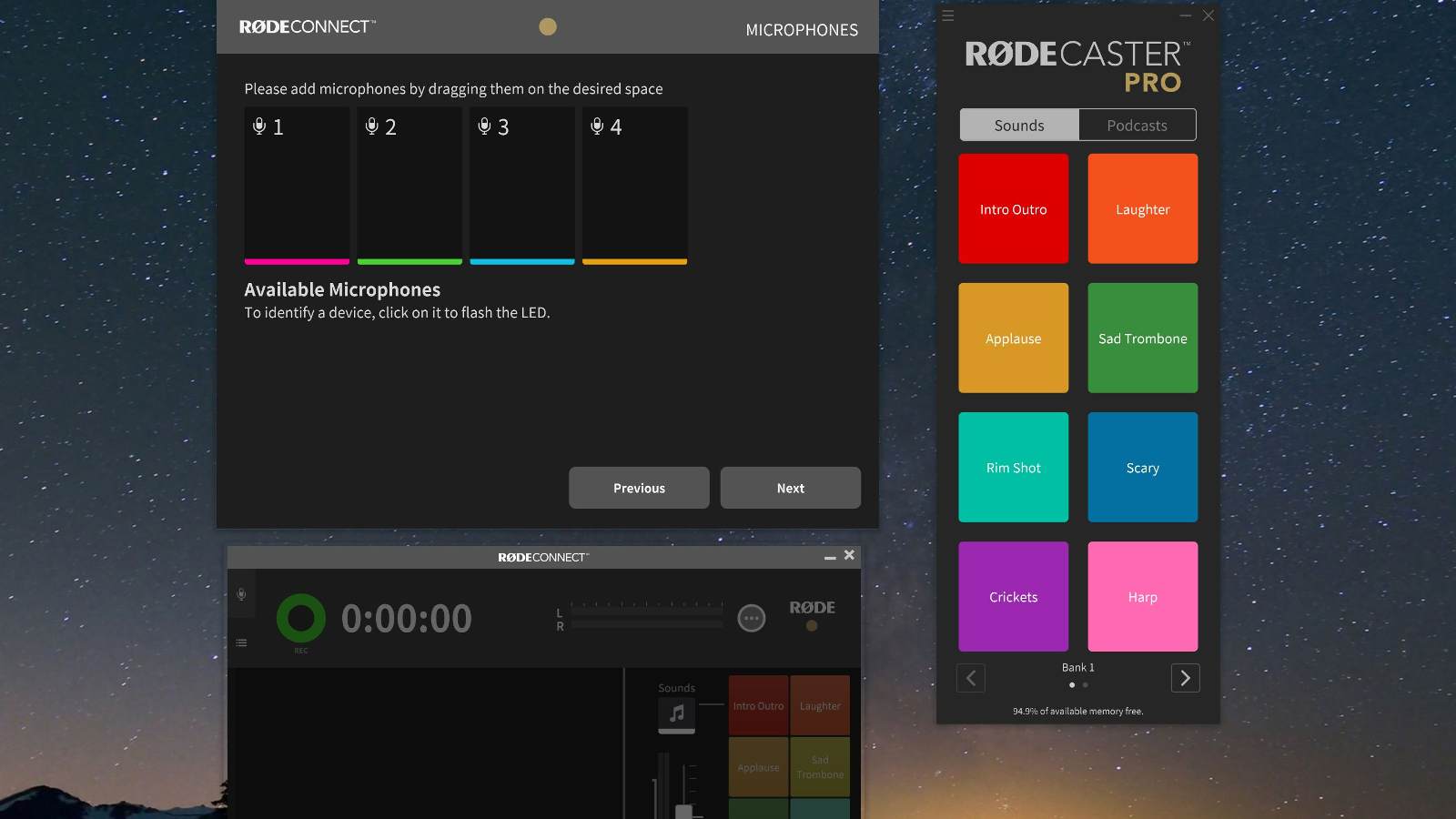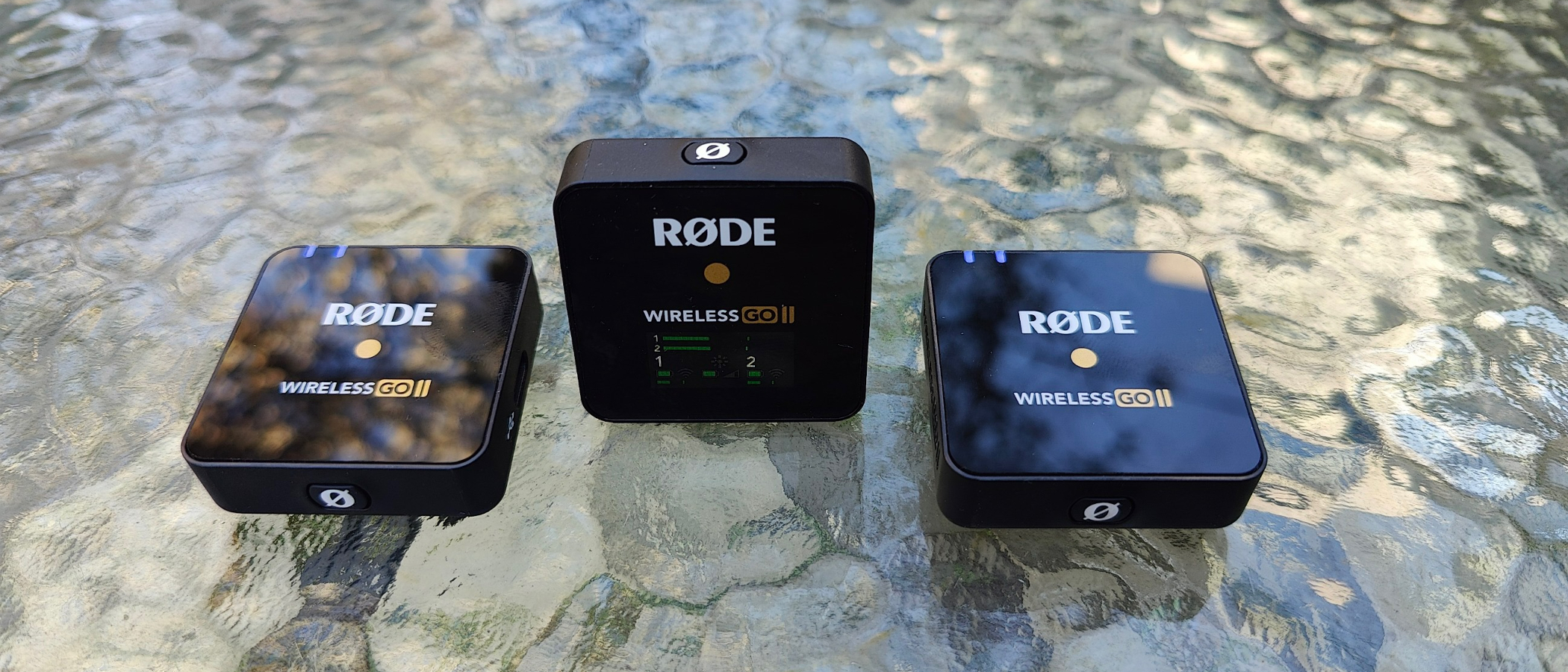Laptop Mag Verdict
The Rode Wireless Go II provides excellent audio recording on the go for content creators of every level. With excellent range, software, and the ability to connect to cameras and phones, the Wireless Go II is one of the best wireless mic systems available today.
Pros
- +
Excellent build quality
- +
Exceptional 600 + foot range
- +
Apps compatible with desktop and mobile OS
- +
Strong AI noise-suppression
- +
Allows you to use your 3.5 audio jack to connect lavalier to 7 hours of battery life and uncompressed recording
Cons
- -
Some settings can only be adjusted via computer
Why you can trust Laptop Mag
Price: $299
Microphone: Omnidirectional microphone
Sample Rate: 50Hz – 20kHz
Weight: Transmitter 1.05 ounces Reciever 1.12 ounces
Size: Transmitter 1.74 x1.78 x 0.7-inches Reciever 1.74 x 1.79 x 0.7-inches
Battery Life: 7 Hours
Transmission Distance: Up to 650 feet
When Rode sent me the Wireless Go II ($299) to review I was very excited because I had been using a set of wireless mics and lavaliers I purchased nearly five years ago that I was never entirely happy with. Although I had spent just under $500 on my set of four wireless mics, the audio was either shallow or tinny, which often led to hours of audio editing in post. I found myself very curious about Rode’s Wireless Go II dual-channel receiver and two transmitters, with built-in microphones and a jack to connect a lavalier mic.
The box the Wireless Go II came in was tiny, and weighed under a pound so I was anxious. Unpacking the three black tiny squares I thought, “this can’t be all there is to the wireless audio system, right?” All three combined did not equal the size of one of my previous wireless transmitters.
Although the Wireless Go II is eye-catching, its size made me doubt its capabilities, admittedly, I was foolish to doubt the Go II based on its size. Like my 4’11 dad, the Wireless Go II reminded me that size doesn’t matter, especially when you can record clear, beautiful audio from over 600 feet away. And while $299 seems a bit pricey, read on to learn why the Rode Wireless Go II is actually a bargain.
Rode Wireless Go II price and availability
The Rode Wireless Go II kit is $299 and it comes with two transmitters, one receiver, a soft carrying case, and a set of cables that allow you to connect to a computer or camera. The three SC20 USB-C-to-USB-A cables and a single 3.5mm TRS cable come with the unit, but to connect to a phone or tablet there are optional cables you can purchase from Rode for $20. You can also purchase the Wireless Go II with a single transmitter and receiver set up for $199.

In comparison, if you only need one mic and are on a tight budget you can look into the Razer Seiren BT Bluetooth wireless mic we recently reviewed that costs $99.99. DJI just recently released a very similar set of wireless mics with a receiver and charging case. We have yet to review them but, they’re currently available for purchase at B&H Photo for $329.
Rode Wireless Go II design
When laid out, the three tiny black rounded rectangular boxes don't seem like much. Each has the white Rode logo lettering and gold dot and Wireless Go II in gold and white on the front face.

Only the receiver differs with a screen to display your audio levels, channels, amount of gain, and connection signal. Each unit has a spring-loaded clip that you can use on a belt or shirt and is also made to slide into most camera cold shoes.
Sign up to receive The Snapshot, a free special dispatch from Laptop Mag, in your inbox.

All three modules have a USB-C port for charging, a 3.5mm audio jack, and a power button. At the bottom of the receiver are two buttons that control the gain and channel selection as you can choose between recording each channel separately or combined, giving you options when it comes time to edit in post.

Thanks to onboard storage you can record over 40 hours of audio internally, just in case you want to record an impromptu podcast.

Each transmitter has two indicator lights at the top that alert the user to connection and charging status. Each transmitter also has a built-in omnidirectional microphone so there’s no need to carry an additional set of lavalier mics.

Three furry windscreens are provided for the transmitter mics as well which work nicely and are easy to put on and take off.
Rode Wireless Go II audio quality
Having used wireless mic systems for many years while working on TV shows, commercial shoots or just filming stand-up comedy, any pro will tell you “you can have the most beautiful looking footage ever, but if the audio is terrible, you’ve got nothing.” That is just a fact. With my old wireless system, I spent a lot of time editing audio in post because it was just not that good. Sure, I was recording audio with a dedicated setup, but I would often hear complaints about the audio quality, and that always made me feel awful, and it was embarrassing.
Ever since our team started using the Rode Wireless GO II setup, our audio has been clean, crisp, and with excellent depth, and the difference in recording quality has been massive, which you can see an example on our YouTube Channel. Thanks to using Series IV 2.4GHz digital transmission and 128-Bit encryption, you will find that the units work well anywhere, even in spaces with a lot of radio frequency activity, which means no dropped signals or interference. I filmed and recorded audio in my densely populated Brooklyn New York neighborhood without issue.
The omnidirectional microphones on the transmitters work in the 50Hz to 20kHz frequency range and do a good job of focusing on your vocals regardless of background. It records all the subtle depth and tones your voice can create. That was all using the built-in mics, then I switched to using a lavalier mic connected via the 3.5mm jack and things got magical.

Thanks to the combination of the transmitter's powerful clear signal and my lavalier mic, I set up my camera and walked all over my backyard, and recorded fantastic audio that caught all the timbre in my voice while keeping out background noise. It allowed me the flexibility to work alone and capture not only great footage but the best audio I have ever recorded directly to the camera.

Lastly, I was on my way to an event and I decided to film in the Lyft I was in as we were passing several popular areas in New York City. I simply plugged the receiver into my smartphone, using the supplied cable and the audio I recorded was splendid. Oh, and my phone charged up the receiver whilst I was recording my video, which was huge because I had forgotten to charge it before I left. Because the windows were open I did have to use the gain adjustment button at the bottom of the mic which allowed me to add strength to my vocals in 3DB increments.
Here is the best part of my experience with the Rode Wireless Go II, I have yet to need to edit my audio in post, saving me a great deal of time that I can spend editing my actual footage to make myself look way more handsome than I actually am.
Rode Wireless Go II software
There are two pieces of software available to Wireless Go II users, Rode Central and Rode Connect. Rode Central is a user-friendly desktop and mobile application that allows you to configure your Wireless Go II devices, unlock advanced features and update them to the latest firmware. Rode Connect is a podcasting and streaming application that allows users to record or stream professional-quality audio to their phone or desktop computer.



Rode Central and Rode Connect software are available for both macOS, iOS, Android, and Windows and can be downloaded for free at Rode’s website.
Rode Wireless Go II battery life
I don’t know how they do it but, the microscopic lithium-ion battery in the Go II will give you up to seven hours of recording time and I personally pushed that limit several times. (I can be very chatty.) However, I average between 6.5 hours on a cold day outside and seven hours while recording indoors. I could also charge the units via the OnePlus 10 Pro’s USB-C port, which I discovered accidentally while recording connected to the phone. Safe to say the advertised recording time of seven hours is very accurate. Also, the Wireless Go II charges up quickly, and there is a wireless charging case available on Amazon if you want an all-in-one charging solution.
Bottom Line
When you combine ultra-lightweight stylish design with excellent engineering, pro-level audio recording quality, 650-foot distance capability, and excellent free software, for under $300, you’re winning. With the two mic transmitters included in the box, it’s a bargain that’s hard to beat for any content creator. The Wireless Go II gives you the option to record directly to a camera, phone, or take advantage of the onboard storage. If you’re looking to purchase a wireless mic system for filming your content on the go, the Wireless Go II is one of the best options available for amateurs, novices, and professionals.

Mark has spent 20 years headlining comedy shows around the country and made appearances on ABC, MTV, Comedy Central, Howard Stern, Food Network, and Sirius XM Radio. He has written about every topic imaginable, from dating, family, politics, social issues, and tech. He wrote his first tech articles for the now-defunct Dads On Tech 10 years ago, and his passion for combining humor and tech has grown under the tutelage of the Laptop Mag team. His penchant for tearing things down and rebuilding them did not make Mark popular at home, however, when he got his hands on the legendary Commodore 64, his passion for all things tech deepened. These days, when he is not filming, editing footage, tinkering with cameras and laptops, or on stage, he can be found at his desk snacking, writing about everything tech, new jokes, or scripts he dreams of filming.

